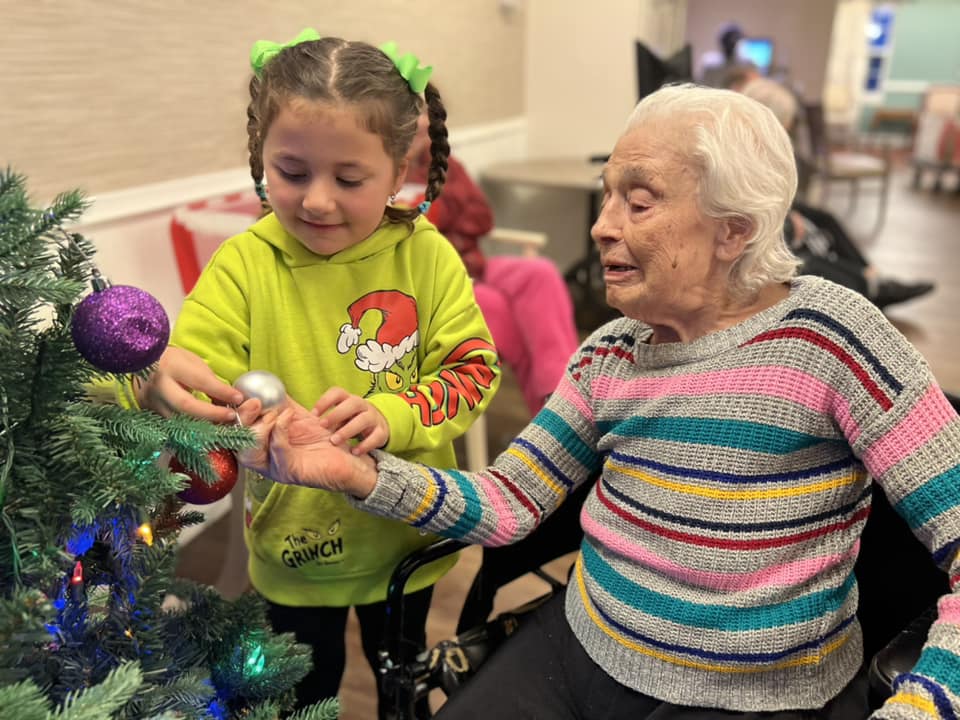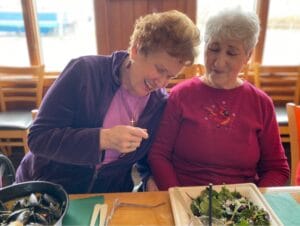Individuals with dementia often experience sensory impairments that can affect their quality of life. As well, many sensory activities for dementia patients can be overstimulating. What’s more, given older adult’s sensitivity to different sensory stimuli, many well-intentioned caregivers and family members present activities that don’t offer maximum health benefits for their loved ones.
So, which activities are best for people with dementia? What can caregivers and family members do to provide optimal care through engaging activities?
In this article, we’ll showcase some of our favorite sensory activities that help boost the physical, cognitive, and emotional health of our loved ones with dementia.
If you’re looking to provide quality, loving care for your loved one with dementia, then this article was made for you.
Come along for the ride as we explore some of the most adaptable (and fun!) sensory activities for people living with dementia.
Considerations to keep in mind before engaging in sensory stimulation
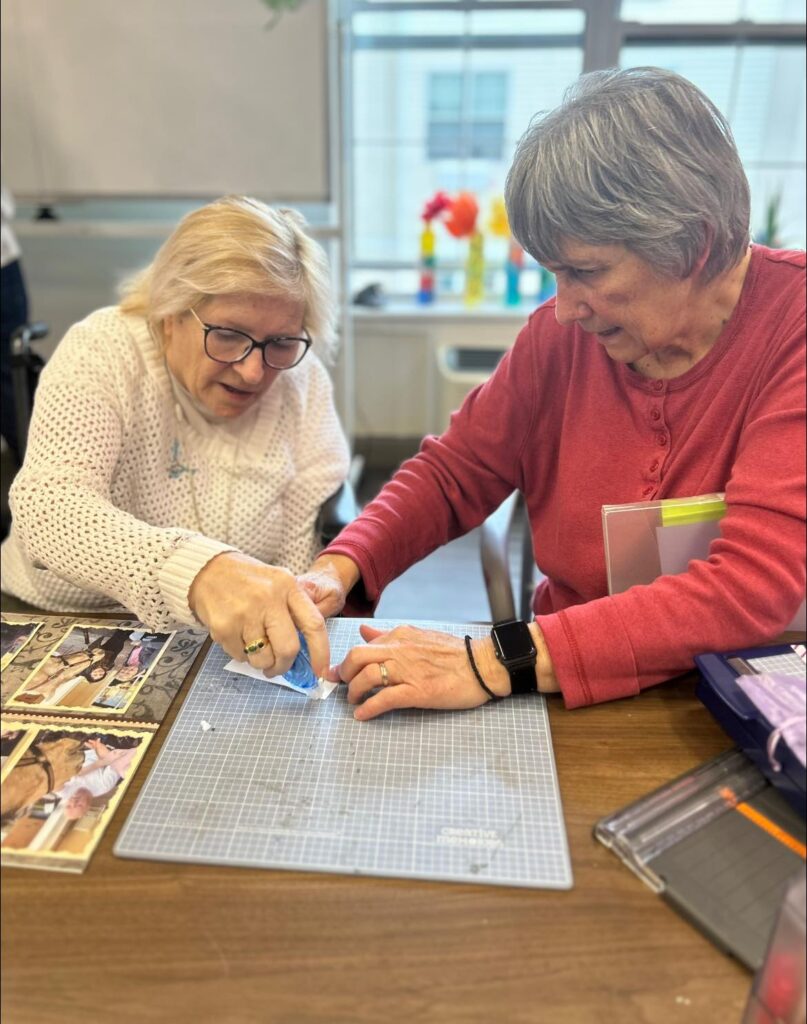
Before we dive into the list of our favorite sensory activities, a few words about sensory stimulation for individuals with dementia:
- The sense of touch: since dementia patients may struggle with physical sensations, you might find that people with dementia are under or over-sensitized to certain sensations. Certain textures might feel uncomfortable, and individuals with dementia may not respond to human touch the way a person without dementia might.
- The sense of smell: as we age, our sense of smell can be impacted. The same goes for individuals with dementia. Be aware of the fact that certain foods, environments, and scents may not be experienced the same way for individuals living with dementia.
- Sight: Blurred vision, difficulties with depth perception, and contrasting colors. People with dementia often find these processes challenging, which can lead to confusion, disorientation, and difficulty recognizing objects and surroundings.
- Sound: Dementia patients also often have auditory processing issues. Background noises and understanding speech can be a challenge.
We mention this information because it’s worth noting for health and safety reasons. Take this information with a grain of salt when participating in any of the sensory activities or memory care activities on this list.
If in doubt, you can always give us a call or contact your trusted health practitioners for guidance when setting up sensory and memory care activities for your loved one with dementia.
Sensory activities for dementia (for older adults and dementia patients)
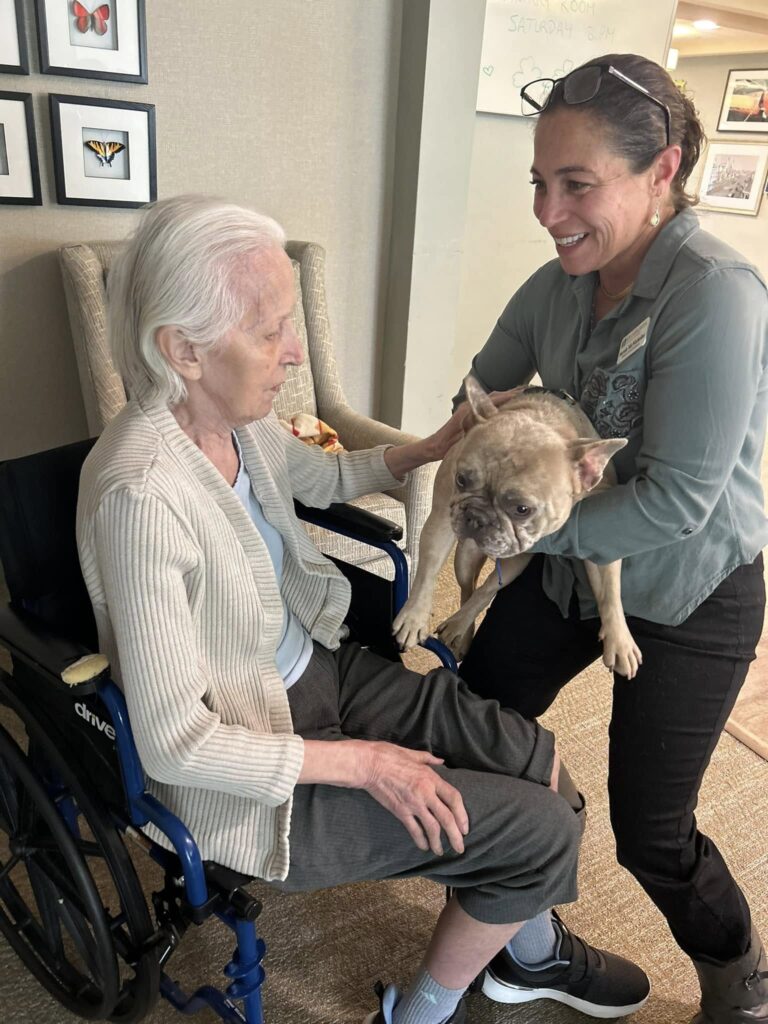
As you focus on sensory activities for older adults with dementia, know that sensory stimulation has been researched and established as a tool for individuals at every stage of dementia.
Before participating or designing sensory activities for people with dementia, know that the activities should be creative, and most importantly, meaningful and fun for the individual.
Note: consider these activities as fresh fodder for additional activities you can do with your loved ones. If you find yourself inspired by any of these activities, consider adapting them and using them as conversation starters.
Most importantly, though, while engaging in these activities, be present with your loved one, and enjoy the special time spent together.
Village Green’s 10 favorite sensory activities for individuals with dementia
| Cognitive and emotional activities | Physical and emotional activities |
| 1. Flower arranging 2. Folding laundry 3. Pairing socks together 4. Organizing cutlery 5. Completing office tasks 6. Sorting coins together | 7. Browsing sensory boxes together 8. Smoothing out crumpled tissues (and other items) 9. Fitting pipes together 10. Tying and untying knots 11. Bonus: Artistic activities like playing music, drawing, and/or dancing |
1. Flower arranging
For individuals with early- and late-stage dementia, keeping a few vases of flowers, ribbons, or even artificial flowers can help provide much-needed mental stimulation.
Engage your loved one by talking about the flowers that are in season or their favorite flower color. You can even ask them to help you create a flower arrangement to help brighten up your living space.
Better yet, consider creating a flower arrangement to give to friends. Doing so can help stimulate memories of the past and even improve your loved one’s mood.
2. Folding laundry
Part functional and part therapeutic, the repetitive motions and soft textures of laundry can help evoke pleasant and familiar memories. Consider filling a basket with small items — such as clean baby clothes or hand towels — and ask your loved one to help you sort and fold clean laundry.
Not only will doing so induce a calming effect, but folding laundry can help dementia patients feel productive, useful, and valued. The next time you’re pulling out socks and shorts from the dryer, consider enlisting the help of your loved one with dementia.
3. Pairing socks together
Speaking of clean laundry, pairing socks can also help promote fine motor skills and hand-eye coordination for individuals with dementia. What’s more, the cognitive stimulation from the exercise can help reduce behaviors like wandering.
Gather a few different pairs of clean socks, and place them in a small basket. Next, ask the individual to help you sort and match the socks.
To maximize the impact of this activity, consider adding different textures, sizes, and colors of socks to your laundry pile.
4. Organizing silverware
For this activity, you’ll want to use a clean set of silverware of different sizes and types. Soup spoons, regular spoons, dinner forks, butter knives, pots, and pans are all fair game.
When organizing the silverware, ask your loved one to help you sort the silverware by type and size. Depending on your loved one’s gross and fine motor skills, you can sort the silverware and place them in trays.
Or, you can set the silverware off to the side. The choice is yours.
You can even use the activity to declutter your kitchen. Decluttering can help reduce stress in those with dementia and cognitive impairments.
5. Complete office tasks with office supplies
This activity is especially helpful for people with dementia and Alzheimer’s who have worked in office jobs. You can use a set of office supplies like paper, newspaper, graph paper, staplers, pens, and pen cups on a desk.
Next, ask your loved one to help you sort through papers or complete simulated writing exercises on the paper. Just note that while participating in this activity, individuals in mid-stage dementia or late-stage dementia might think they’re supposed to be at work.
Finally, setting up a desk with office supplies is a great way to fulfill a sense of accomplishment and purpose for individuals with dementia.
6. Sensory boxes: beach, builders, bird watching, scent, and seasons
Often called memory boxes, sensory boxes are filled with soothing items that help people with dementia speak, interact, and elicit fond memories with others.
These boxes contain items that are designed to stimulate and/or calm a person.
You can create a beach box — a bin with kinetic sand, sea shells, and other beach-based items — to imagine and talk about memories that your loved one may have had in the past.
Especially if your loved one with dementia has limited mobility, sensory boxes can be useful for eliciting memories when your loved one was younger and more mobile.
Builder boxes (complete with wooden blocks), bird-watching boxes (complete with coloring books on birds, a bird house, and an artificial bird’s nest), and season boxes (with postcards, flowers, and leaves) can be a great way to reminisce and spark conversation.
Scent boxes in particular can also be helpful for eliciting our sense of smell. Including essential oils on cotton pads, ground spices, or a lavender candle can elicit memories of cooking and entertaining, relaxing and lounging, or spending time with loved ones.
Note: with sensory boxes, your loved one may not be able to tell you in words what they’re feeling or thinking. Therefore, look for non-verbal cues like a smile, tensed muscles, or furrowed brows to signal which items in the box your loved one enjoys (or dislikes).
The information you receive will be invaluable in guiding your conversation and next steps along your loved one’s journey.
7. Smoothing out crumpled wrapping paper
Another item on our list of therapeutic activities for different stages of dementia is smoothing out crumpled tissue paper. You can fill a small box with crumpled tissue paper — or papier-mâché — and ask the person to help you smooth out the paper and fold it for reuse.
As the disease progresses, the tactile sensation of smoothing paper can help ease agitation and feelings of anxiety. You can use different colors and sizes of the paper to make the activity more engaging.
8. Sort coins together
Of the many sensory activities for seniors and older adults with dementia, sorting coins might be one of the most applicable for everyday life. Sorting coins can help with many activities of daily living such as counting money for shopping and calculating the cost of household goods.
Depending on your loved one’s preferences and abilities, you can collect a variety of coins and engage your loved one by asking them to help you count the number of coins in your wallet. What’s more, you can also carry the coins and ask them how much money you have in your hand.
9. Fitting pipes together
Another physical and cognitive activity that offers tactile stimulation is fitting pipes together. This activity is great for individuals who love to use their hands.
The activity can be very helpful if your loved one enjoys tinkering with home improvement projects.
For example, you can purchase PVC pipes at a local hardware store. Consider buying a variety of shapes, such as elbow and joint pieces. Next, ask your loved one to help you fit the pieces together.
Finally, you can even turn this activity into an arts and crafts activity by building something that your loved one may have engaged with in the past. Building recognizable structures can be very comforting for people who used to tinker with, for example, household repairs and auto repair work.
10. Tie and untie knots together
Of the many exercises to improve gross and fine motor functioning, tying and untying knots rank high on our list. Knot-tying is also one of the many physical activities that are great for those who love the great outdoors.
For example, for people who love boating and camping, you can tie a few knots in a rope and ask the person to help you untie them. If you’re caring for someone with dementia, tying and untying knots is a helpful way to add more hand-eye coordination to your loved one’s life.
Bonus: Art activities like drawing, dancing, and listening to music
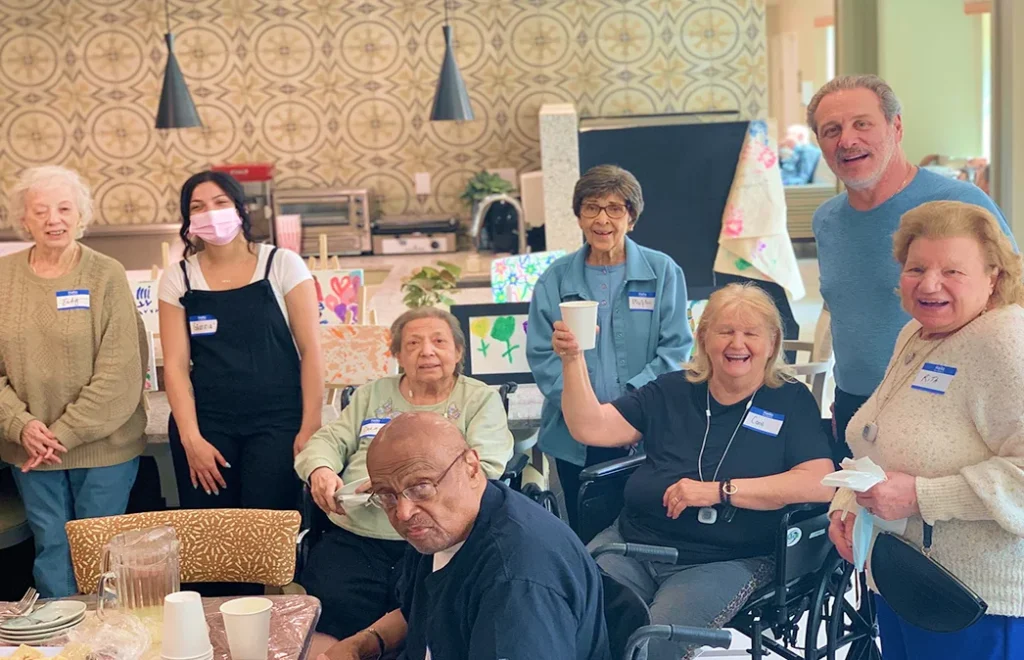
Lest we forget, art activities are some of the many sensory activities that can help a person living with dementia to thrive. For instance, listening to music for 45 minutes or more can be especially helpful in reducing symptoms of depression and anxiety (Zhang et. al., 2023).
Also, art therapy can offer visual stimulation and is one of the many ways to engage individuals with memory loss. Finally, research shows that the strength training, balance, and functional mobility associated with dancing can help reduce the risk of falls in older adults (Abreu and Hartley, 2013).
As such, art activities can be adapted for different needs. You can make art activities more accessible for your loved one by reaching out to a senior care specialist or an occupational therapist familiar with geriatric populations.
They’d be happy to help you craft the right activity for your and your loved one’s needs.
Did you know?
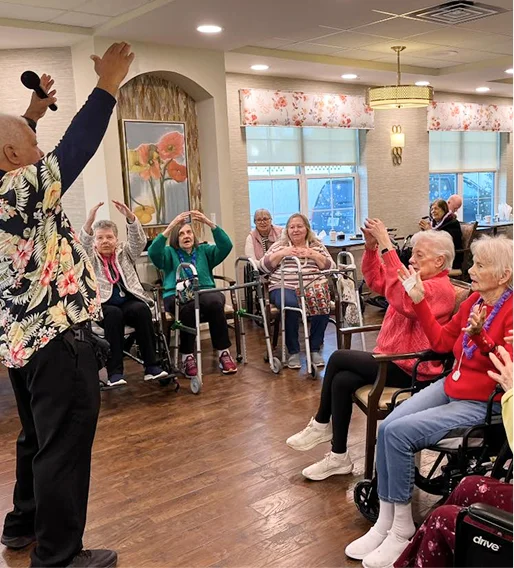
Did you know that many people think that Alzheimer’s and dementia are the same and use the terms interchangeably? In fact, key distinctions exist between the two.
For effective treatment and management of this progressive disease, we need to know the differences between these two memory-related diseases. Our team is dedicated to providing top-notch support and care for seniors and their families impacted by this disease.
To see what we do to care for and improve the cognitive functioning of our residents, check out all of our engaging activities right here on our Facebook page.
Find calming and therapeutic activities in a NY memory care community near you
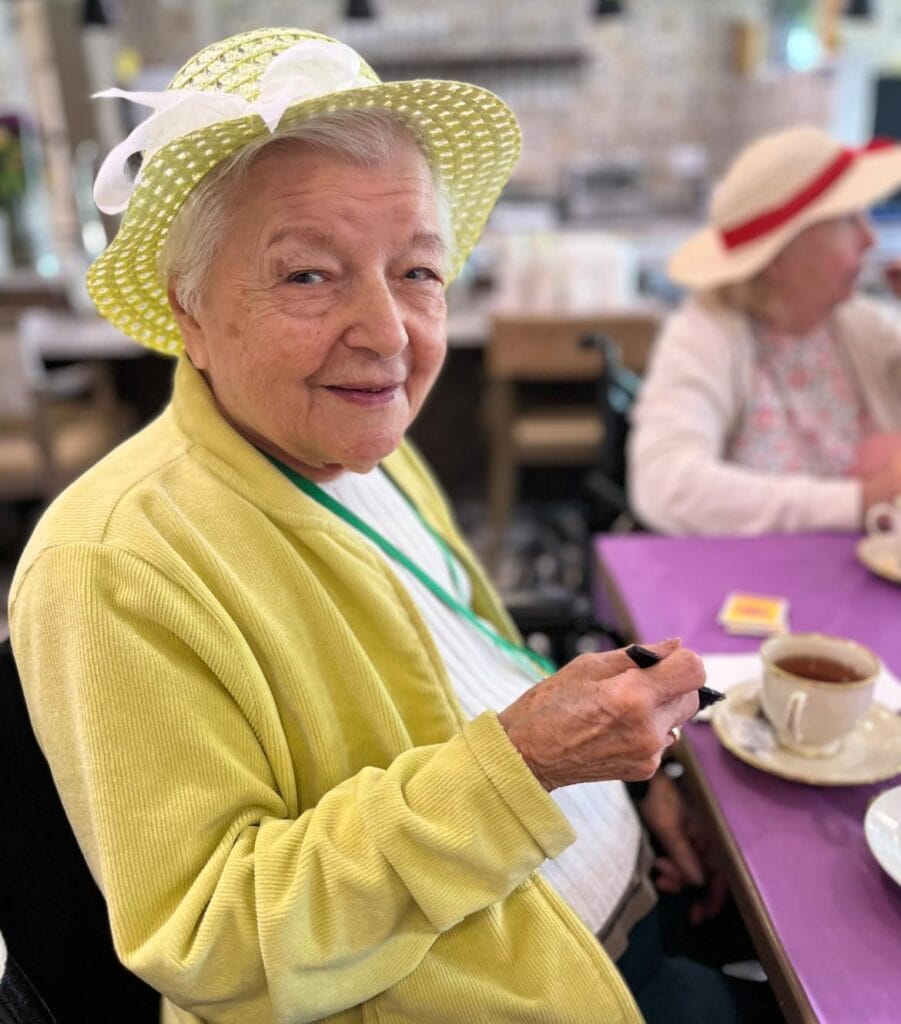
Of the many different sensory experiences available to seniors with dementia, we hope you know that many of these activities can be adapted to your loved one’s needs. What’s most important is that you provide a calming environment for individuals with dementia with each activity.
What’s more, whether you choose to garden, solve crossword puzzles, or explore familiar scents in a scent box, make sure to check in with your loved one often regarding how they’re feeling about the activity.
Finally, if at any point you’d like support with creating, executing, or brainstorming activity ideas for you or your loved one, we’re just a short phone call and email away. To contact us about memory care activities for people with dementia, don’t hesitate to call us at (516) 271-2500 or villagegreenlife@villagegreenseniorliving.com anytime.
We wish you and your loved one all the best health on the journey ahead!
Village Green: Top-Quality Senior Living for Individuals with Dementia in Levittown, NY

